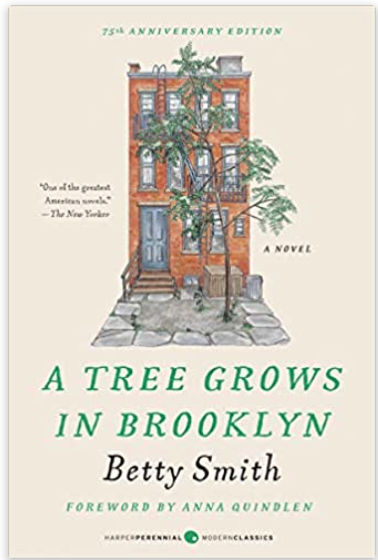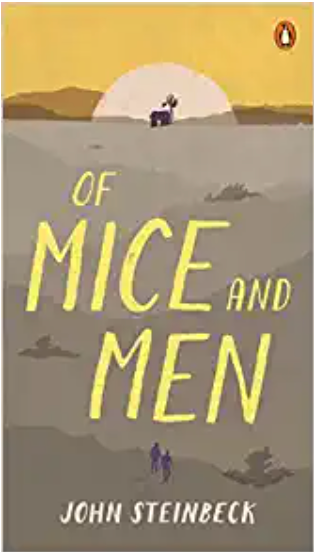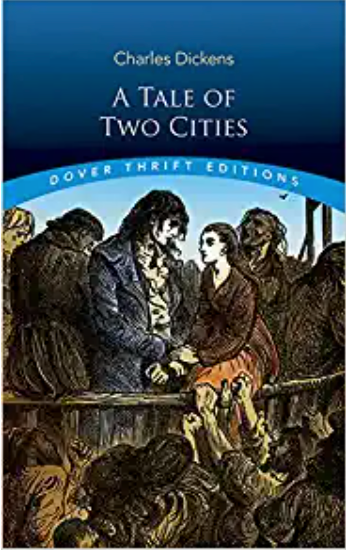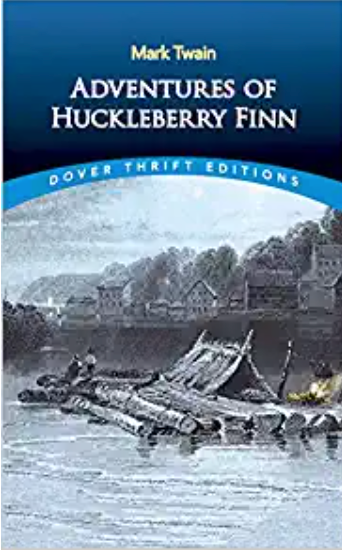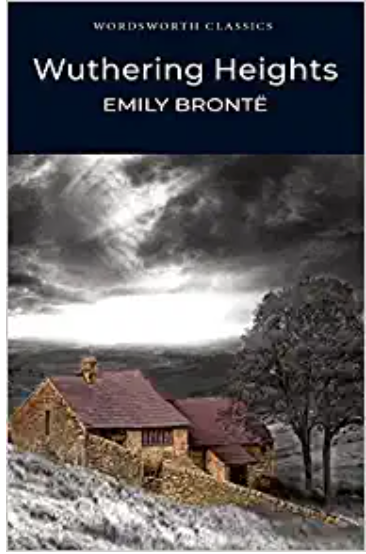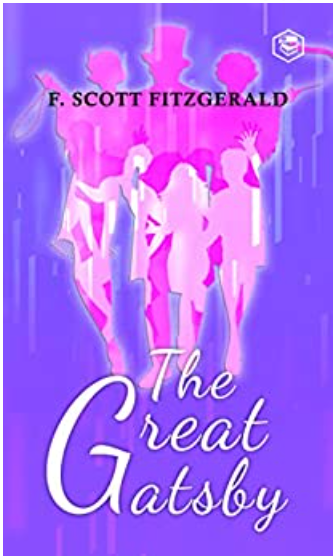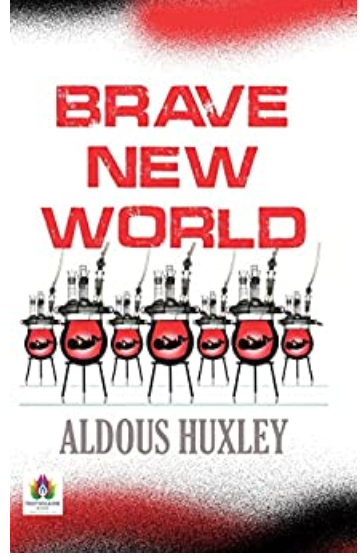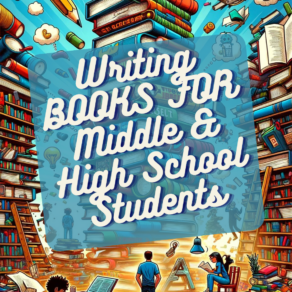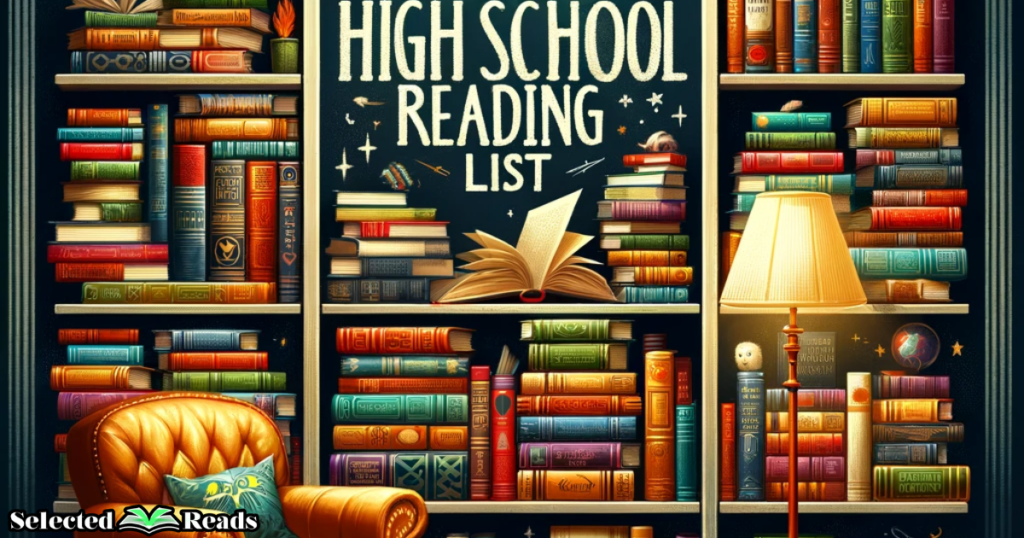
As an educator and a passionate advocate for the transformative power of reading, I’ve always believed in the profound impact that literature can have on young minds. With this in mind, I’ve compiled an ultimate reading list for high school students, a collection that spans genres, eras, and cultures, offering a diverse range of perspectives and experiences.
These books are windows into different worlds and mirrors reflecting our own. From the dusty roads of the American Great Depression in Steinbeck’s “Grapes of Wrath” to the dystopian future envisioned by Orwell in “1984”, each book has been selected for its ability to challenge, inspire, and provoke thought. Whether it’s the raw honesty of Salinger’s “The Catcher in the Rye” or the timeless struggle between power and morality in Shakespeare’s “Macbeth”, these novels offer invaluable insights into the human condition.
This list is not just a recommendation but an invitation – an invitation to embark on journeys, to confront truths, and to engage with ideas that have shaped, and continue to shape, our world. As educators and parents, our role is to guide our young readers through these literary landscapes, helping them to glean lessons, empathies, and inspirations that will last them a lifetime.
High School Reading list
Here is the list of the must-read books for high schoolers:
1. The Scarlet Letter, by Nathaniel Hawthorne
Nathaniel Hawthorne’s “The Scarlet Letter” is a profound exploration of sin, guilt, and legalism, set in the Puritan Massachusetts Bay Colony between 1642 and 1649. It intricately narrates Hester Prynne’s journey towards repentance and redemption, delving into themes that are as relevant today as they were in the 17th century. The novel’s rich characters, vividly painted setting, and the powerful narrative make it a captivating and thought-provoking read, immersing readers in a world where personal and societal conflicts intertwine.
2. Alice’s Adventures in Wonderland, by by Lewis Carroll
“Alice’s Adventures in Wonderland” by Charles Lutwidge Dodgson, better known as Lewis Carroll, is a journey filled with whimsy, humor, and boundless imagination. This classic tale follows Alice as she tumbles down the rabbit hole into a fantastical underground world. Here, she encounters a memorable cast of characters including the White Rabbit, Mad Hatter, and the Queen of Hearts. Carroll’s vivid storytelling and creative genius make this book a timeless adventure that continues to enchant readers of all ages.
3.Fahrenheit 451, by Ray Bradbury
Ray Bradbury’s “Fahrenheit 451” is a powerful and iconic dystopian novel that delves into a world where books are outlawed and “firemen” like Montag are tasked with burning them. This thought-provoking narrative challenges readers to contemplate the value of literature and the dangerous implications of censorship. As Montag awakens to the beauty and power of words, he begins to question his role in society, leading readers on a gripping journey that examines the essence of human existence and the transformative power of books.
4. A Tree Grows in Brooklyn, by Betty Smith
Betty Smith’s “A Tree Grows in Brooklyn” offers a vivid portrayal of life in early 20th-century Williamsburg, Brooklyn. Through her enchanting narrative, Smith brings to life the unique vibrancy and cultural nuances of the community. From the simple pleasures of trading junk for pennies to the festive anticipation of holidays, the novel captures the essence of a bygone era. Its universal themes of resilience, hope, and the human experience resonate deeply, making it a timeless piece of literature that echoes the heartbeats of its characters.
5. The Odyssey, by Homer
Homer’s “The Odyssey” stands as a monumental work in literature, chronicling the epic journey of Odysseus as he returns home from the Trojan War. This narrative is a masterful blend of adventure, mythology, and the human struggle, showcasing Odysseus’ reliance on his wit and resilience against divine and natural forces. It’s not just a story of a man’s journey home, but a profound exploration of moral endurance and the human spirit, making it a cornerstone of classical literature.
6. Death of a Salesman, by Arthur Miller
Arthur Miller’s “Death of a Salesman” presents a poignant and critical look at the American Dream through the eyes of Willy Loman, a man who embodies the relentless pursuit of success. Loman’s life, defined by his belief in the power of salesmanship and personal reinvention, unfolds as a tragic tale of unfulfilled dreams and disillusionment. Miller’s exploration of Loman’s life, marked by a blend of past and present, delves deep into themes of betrayal, personal failure, and the crushing weight of societal expectations, making it a compelling and critically acclaimed work.
7. Anne Frank: The Diary of a Young Girl, by Anne Frank
Anne Frank’s “The Diary of a Young Girl” is a powerful, first-hand account of a Jewish girl and her family who went into hiding during the Nazi occupation of Holland. From 1942 to 1944, Anne and her family lived in the Secret Annexe of an Amsterdam office building, facing the harsh realities of confinement, hunger, and the constant threat of discovery. Anne’s diary offers a deeply personal and vivid window into this period, capturing her thoughts, fears, and hopes, making it an essential and heart-wrenching narrative of human resilience and historical significance.
8. Heart of Darkness, by Joseph Conrad
Joseph Conrad’s “Heart of Darkness” is a profound and unsettling narrative about colonialism and human nature. The story follows Charles Marlow’s journey as a ferry-boat captain in Africa for a Belgian trading company. Marlow encounters three kinds of darkness: the impenetrable Congo wilderness, the cruelty Europeans inflicted on the natives, and the terrifying darkness within humans capable of evil deeds. This book is a critical exploration of the myths of colonization and a deep dive into the complexities of the human psyche.
9. Jane Eyre, by Charlotte Brontë
Charlotte Brontë’s “Jane Eyre” is a tale of passion, independence, and morality. The novel follows Jane Eyre from her cruel upbringing as an orphan to her role as a governess at Thornfield Hall. Her love for the enigmatic Mr. Rochester and her moral convictions are put to the test when she uncovers his dark secret. Brontë’s work is a powerful and emotional journey of a woman’s struggle for freedom and identity in a society bound by conventions, making it a timeless piece of literature.
10. A Tree Grows in Brooklyn, by Betty Smith
“A Tree Grows in Brooklyn” by Betty Smith is a poignant and beautifully written novel that captures the essence of life in the Williamsburg slums during the early 20th century. Following the story of Francie Nolan, the book illustrates the resilience of a young girl facing the adversities of poverty and prejudice. Smith’s narrative is rich with details of everyday life, painting a vivid picture of the struggles and hopes of a family trying to make ends meet, and highlighting the enduring spirit of youth in the face of hardship.
11. Of Mice and Men, by John Steinbeck
John Steinbeck’s “Of Mice and Men” is a compelling tale of friendship and dreams amid the harsh realities of the Great Depression. It centers around George and Lennie, two laborers with contrasting physical and mental abilities, who share a dream of owning their own land. Their journey takes a tragic turn on a ranch in the Salinas Valley, where they face challenges that test their bond and dream. Steinbeck’s narrative is a powerful exploration of human nature, the fragility of hopes, and the complexities of relationships in a world filled with adversity.
12.Crime and Punishment, by Fyodor Dostoyevsky
Fyodor Dostoyevsky’s “Crime and Punishment” is a profound psychological exploration of morality and redemption. The novel follows Raskolnikov, a destitute student in St. Petersburg who commits a brutal murder, believing he is above moral law. His subsequent journey through guilt, terror, and suffering is a gripping examination of the human condition, confronting themes of justice, conscience, and the potential for redemption through suffering. Dostoyevsky masterfully delves into the depths of the human psyche, making this book a cornerstone of existential literature.
13. The Old Man and the Sea , by Ernest Hemingway
Ernest Hemingway’s “The Old Man and the Sea” is a timeless story of endurance and resilience. It narrates the tale of an old Cuban fisherman’s grueling battle with a giant marlin in the Gulf Stream. Hemingway’s minimalist style and powerful language beautifully capture the themes of courage, personal triumph, and the struggle against defeat. This novel is not just a story about a fisherman, but a profound reflection on the human spirit and its capacity to persevere in the face of overwhelming odds.
14. Great Expectations, by Charles Dickens
Charles Dickens’ “Great Expectations” is a classic Victorian bildungsroman that narrates the personal development of an orphan named Pip. Published in serial form from 1860 to 1861, the novel is renowned for its vivid imagery, depicting the stark realities of poverty, prison ships, and life-and-death struggles. The story takes readers through Pip’s life as he encounters various characters and experiences that shape his growth and understanding of the world. This novel is a profound exploration of social class, personal ambition, and the complexities of human nature.
15. A Tale of Two Cities, by Charles Dickens
“A Tale of Two Cities” by Charles Dickens is a historical novel set against the backdrop of the French Revolution. It follows Dr. Alexandre Manette, who is released after 18 years of unjust imprisonment in the Bastille and reunited with his daughter, Lucie. The narrative becomes entangled with the story of Charles Darnay, a young Frenchman falsely accused of treason, and Sydney Carton, a dissolute lawyer whose fate becomes intertwined with Darnay’s. Dickens masterfully weaves a story of love, sacrifice, and revolution, capturing the turmoil and spirit of a pivotal era in history.
16. Things Fall Apart, by Chinua Achebe
Chinua Achebe’s “Things Fall Apart” is a powerful narrative set in late 19th century Africa, at the cusp of European colonial expansion. It tells the story of Okonkwo, a respected Igbo warrior from Umuofia, and his struggle to maintain his cultural identity in the face of British political and religious influence. Achebe’s novel is a critical examination of the clash between traditional African culture and the forces of colonialism, offering a nuanced perspective on the impact of European imperialism on African societies.
17. Adventures of Huckleberry Finn, by Mark Twain
Mark Twain’s “Adventures of Huckleberry Finn” is a seminal work in American literature, celebrated for its vivid portrayal of a boy’s adventures along the Mississippi River. The novel intertwines themes of freedom, morality, and societal norms through the eyes of its young protagonist, Huck Finn. Twain’s exceptional skill in dialogue and characterization makes this a story of deep human significance, exploring the inherent conflicts between natural instincts and the constraints of society, and the evils of slavery.
18. Wuthering Heights, by Emily Bronte
Emily Bronte’s “Wuthering Heights” is a tale of passion and revenge set in the Yorkshire moors. It centers on the intense and tumultuous relationship between Catherine Earnshaw and Heathcliff, an orphan taken in by Catherine’s father. Following Mr. Earnshaw’s death, Heathcliff faces mistreatment and leaves, only to return years later as a wealthy man intent on revenge. Bronte’s novel is a deep exploration of love, jealousy, and social standing, painting a vivid picture of the destructive power of obsession and the complexities of human emotions.
19. The Adventures of Tom Sawyer, by Mark Twain
Mark Twain’s “The Adventures of Tom Sawyer” is a charming and mischievous narrative about a young boy’s escapades along the Mississippi River. Set in the fictional town of St. Petersburg, inspired by Twain’s own childhood in Hannibal, Missouri, the novel follows Tom Sawyer’s adventures, from fighting in the streets to his infamous whitewashing of a fence. Twain captures the essence of boyhood and adventure in this classic, which continues to delight readers with its humor, vitality, and timeless exploration of youth.
20. 1984, by George Orwell
George Orwell’s “1984” is a powerful and haunting portrayal of a dystopian future where independent thought is suppressed under an omnipresent, totalitarian regime. The novel follows Winston Smith, an employee at the Ministry of Truth, who becomes disillusioned with his life under the oppressive rule of Big Brother. Orwell’s vision of a world where individual freedom is obliterated and surveillance is omnipresent has remained profoundly influential, serving as a stark warning about the dangers of unchecked governmental power and the erosion of fundamental human rights.
21. Animal Farm, by George Orwell
George Orwell’s “Animal Farm” is a satirical fable that tells the story of overworked and mistreated animals who revolt against their human farmer, seeking to create an ideal society based on equality, justice, and progress. However, their revolution soon gives way to a new tyranny as oppressive as the one they overthrew. This allegorical novel brilliantly critiques the corrupting influence of power and the cyclical nature of oppression, encapsulating the rise and fall of revolutionary ideals into totalitarianism through its memorable animal characters.
22. The Great Gatsby, F. Scott Fitzgerald
“The Great Gatsby” by F. Scott Fitzgerald is an iconic novel set in the roaring twenties, epitomizing the glamour and decadence of the Jazz Age. The story revolves around the enigmatic millionaire Jay Gatsby and his lavish parties in West Egg, New York. Gatsby’s mysterious past, rumored involvement in bootlegging, and his unyielding love for Daisy Buchanan form the core of this tragic narrative. Fitzgerald masterfully paints a picture of the era’s excesses and the hollowness of the American Dream, making this a timeless exploration of desire, disillusionment, and the pursuit of unattainable ideals.
23. Lord of the Flies, by William Golding
William Golding’s “Lord of the Flies” is a disturbing tale of civilization versus savagery. It narrates the story of schoolboys stranded on a deserted island who initially embrace the freedom but gradually descend into barbarity. The island, initially a paradise, becomes a sinister backdrop for power struggles, fear, and violence. Golding’s novel is a powerful commentary on the inherent evil in human nature and the thin veneer of societal norms that keep it in check, making it a profound exploration of human psychology and social behavior.
24. To Kill a Mockingbird, by Harper Lee
Harper Lee’s “To Kill a Mockingbird” is a profound and moving tale of racial injustice, morality, and empathy set in the American South during the 1930s. The story, seen through the eyes of a young girl named Scout, revolves around her father, Atticus Finch, a lawyer who defends a black man unjustly accused of a terrible crime. This novel beautifully blends the innocence of childhood with the grim realities of racial prejudice, creating a powerful narrative that highlights the importance of integrity, courage, and standing up for what is right.
25. Brave New World, by Aldous Huxley
Aldous Huxley’s “Brave New World” is a groundbreaking dystopian novel set in a future World State, where citizens are genetically engineered and conditioned for their roles in a strictly hierarchical society. The novel anticipates advancements in reproductive technology, psychological manipulation, and classical conditioning, painting a chilling picture of a seemingly perfect yet fundamentally flawed society. Huxley’s exploration of themes such as individuality, freedom, and the cost of stability challenges readers to reflect on the nature of happiness and the dangers of sacrificing human values for technological progress.
26. Grapes of wrath, by John Steinbeck
John Steinbeck’s “The Grapes of Wrath” is a powerful narrative set during the Great Depression and the Dust Bowl in the American Midwest. It follows the story of Tom Joad, the protagonist who, despite his violent actions, emerges as a morally just hero. The novel vividly portrays the plight of dispossessed families and their struggle to find dignity and justice in an era of immense hardship. Steinbeck’s work is a poignant exploration of social injustice, human resilience, and the enduring spirit of those who strive against overwhelming odds, making it a cornerstone of American literature.
27. The Alchemist, by Paulo Coelho
Paulo Coelho’s “The Alchemist” is a transcendent tale of magic, mysticism, and self-discovery. It tells the story of Santiago, an Andalusian shepherd boy, who embarks on a journey to find worldly treasure but discovers a far more valuable form of riches. The novel is a profound meditation on following one’s dreams, understanding one’s destiny, and the importance of listening to the heart. Coelho’s masterful storytelling blends philosophy and adventure, offering readers a guide to recognizing opportunities and learning to decipher the omens along life’s path.
28. Macbeth, by William Shakespeare
William Shakespeare’s “Macbeth” is a tragic exploration of ambition, guilt, and moral corruption. The play revolves around the Scottish general Macbeth, whose desire for power leads him to commit regicide and seize the throne. Driven by prophecies and spurred by his wife, Macbeth spirals into a cycle of murder and paranoia. The play is a profound examination of the consequences of unchecked ambition and the psychological turmoil that comes with guilt and fear, showcasing Shakespeare’s unparalleled understanding of the human condition.
29. The Catcher in the Rye, by J.D. Salinger
J.D. Salinger’s “The Catcher in the Rye” is a seminal work in American literature, capturing the essence of teenage disillusionment and rebellion. The novel follows the story of Holden Caulfield, a sixteen-year-old, as he navigates the complexities of adolescence after leaving his prep school. Holden’s journey through New York City and his candid reflections on the adult world reveal a deep sense of alienation and a quest for identity. Salinger’s portrayal of teenage angst and the struggle for authenticity has made this book a defining work on the pains of growing up.
30. The Handmaid’s Tale, by Margaret Atwood
Margaret Atwood’s “The Handmaid’s Tale” is a chilling portrayal of a dystopian future where the United States has become the repressive Republic of Gilead. In this society, plummeting birth rates and social unrest have led to the subjugation of women, whose rights are stripped away under a theocratic regime. The novel, through its vivid imagery and powerful narrative, explores themes of power, gender oppression, and resistance. Atwood’s creation is not only a warning about the dangers of extremism and the erosion of women’s rights but also a compelling story of survival and defiance in the face of tyranny.
Conclusion
As educators and lifelong learners, we understand the immense value that reading holds for our students – it’s not just about improving literacy skills, but about broadening horizons, fostering empathy, and sparking critical thinking.
These books, ranging from the haunting foresight of “1984” to the poignant realism of “The Grapes of Wrath,” are not only essential reads for high school students but are also timeless classics that speak to readers of all ages. They challenge us to consider different perspectives, confront our own biases, and understand the complexity of the human spirit.
I encourage educators and parents alike to promote these works, not just as academic requirements, but as venues to deeper understanding and appreciation of our world. Let’s use these stories to ignite conversations, to inspire change, and to continue nurturing a love for reading that will last a lifetime.












